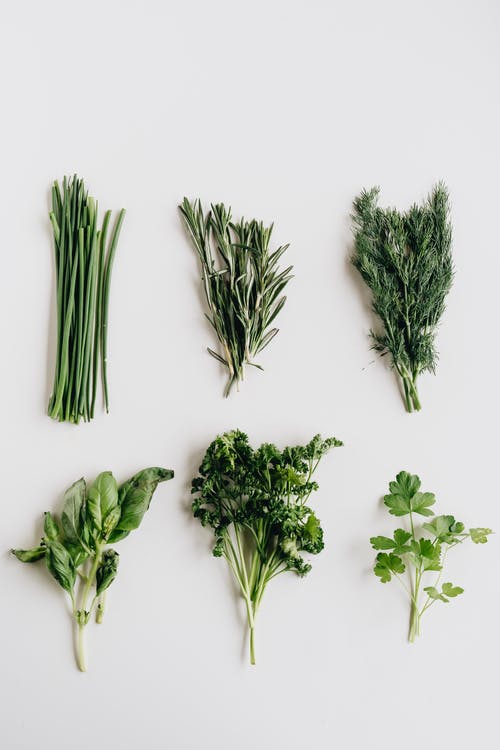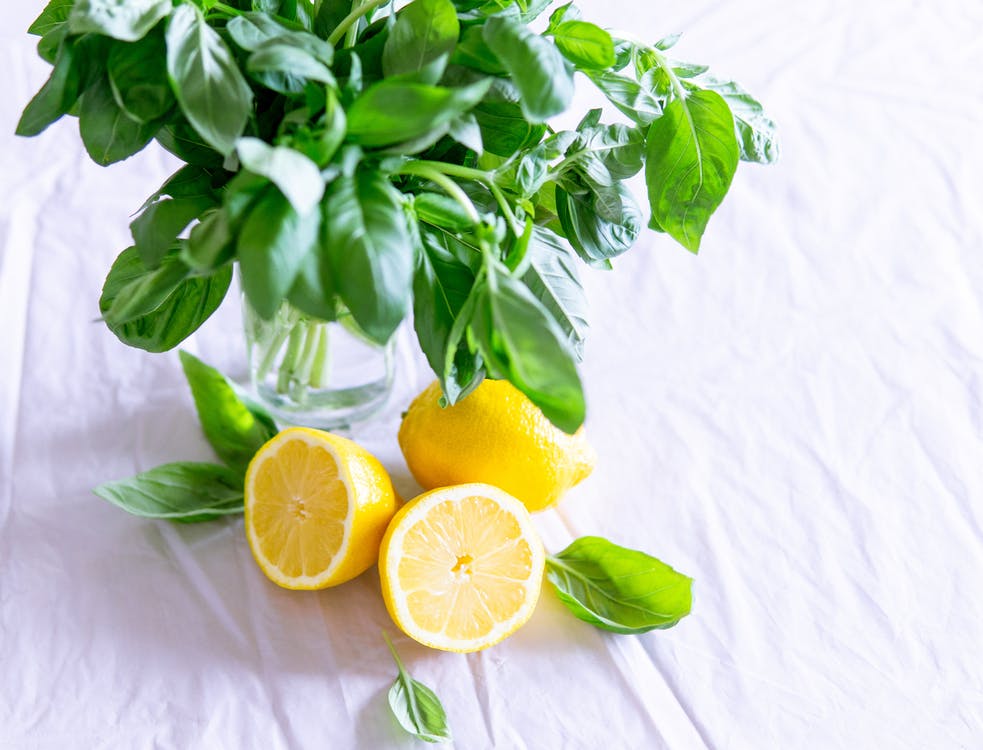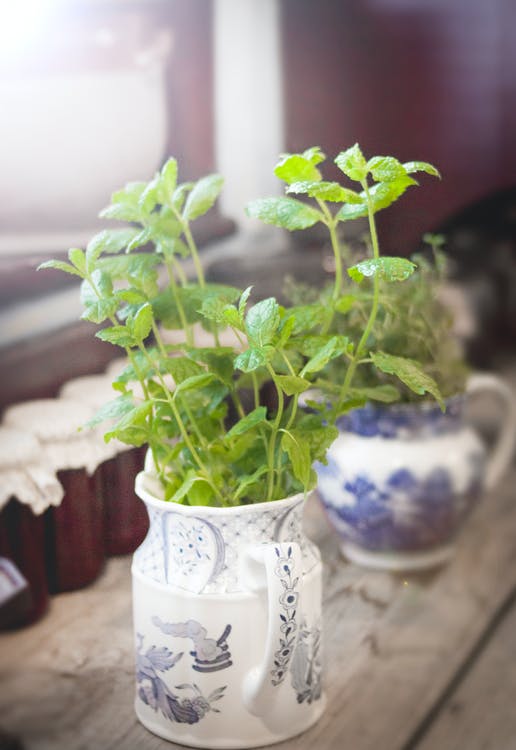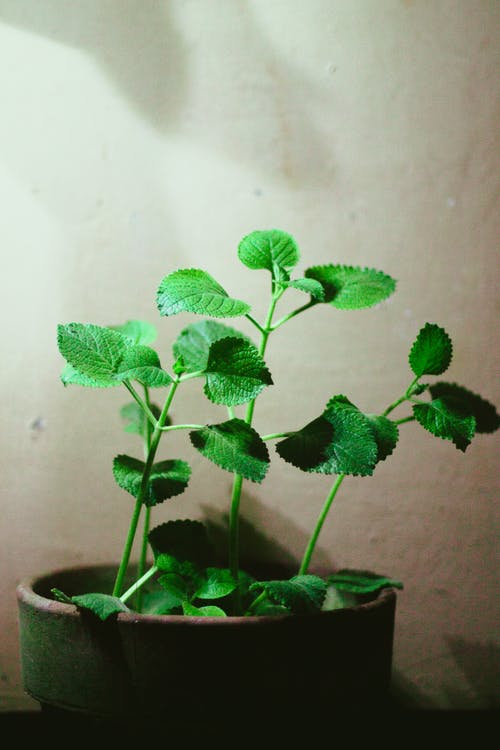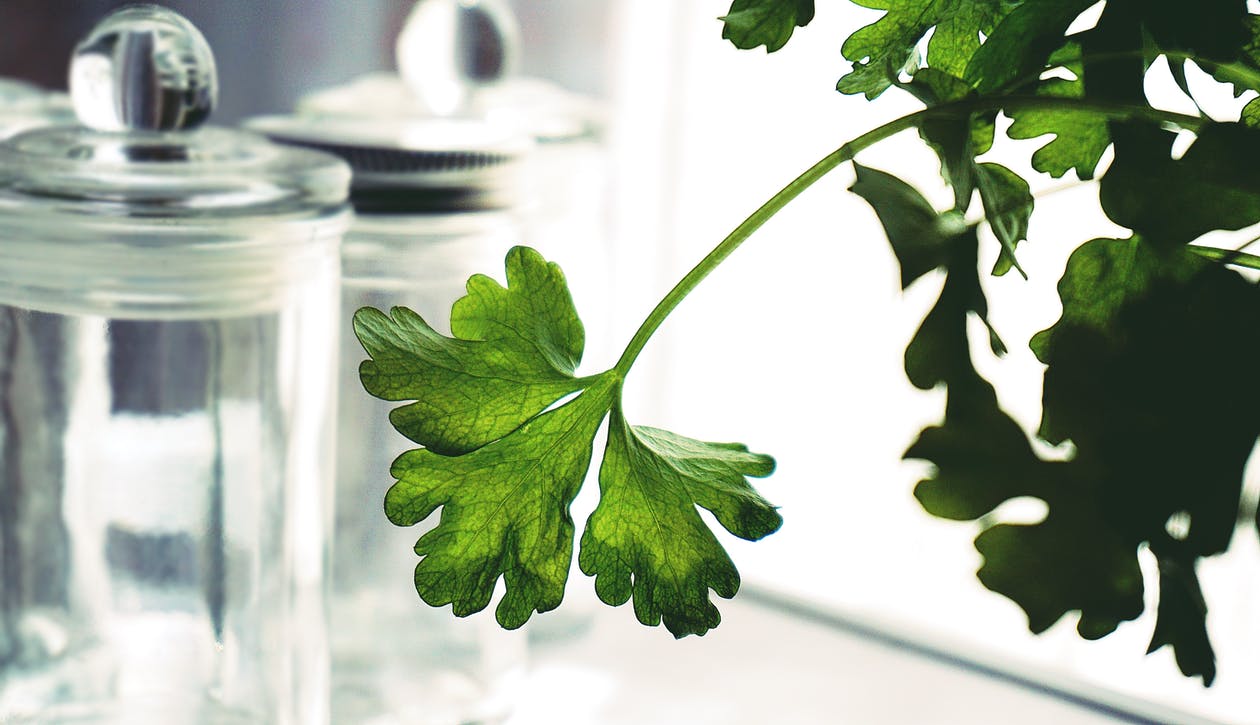The addition of multiple herbs and spices provides an extra aroma to your food. On the contrary, if fresh herbs are used as an active ingredient or a garnishing ingredient in the meals, it can make your cooking come to life. Hence, fresh herbs are a must-have item in your kitchen.
In today’s advanced era, good germination quality seeds and fertilizers for better germination are easily available in stores. Therefore, you can easily grow your favorite herbs in your kitchen from scratch.
Growing Your Own Goodness
If you are habitual of purchasing herbs from the “produce section” of the grocery store, you will be well aware of how quickly the cost of fresh ingredients can increase. Not just that, but sometimes when you need them the most, they may be out of stock. The preferred substitute is to grow your herbs in your kitchen.
Growing indoor plants in your home not only saves your money but also limits the use of plasticizers on the herbs. Indoor gardening can be a fun activity for your children as well. All you need is to dedicate a bit of attention and love to your kitchen garden.
Which Herbs Can You Grow?
Everlasting herbs, such as rosemary, oregano, thyme, chives, and mint can be easily germinated from young plants. You can buy these young plants from any nearby herb garden. Basil and mint are some of the herbs that are easily grown from the cuttings. A glass of water is all that you need to root them.
On the other hand, some herbs, for instance, basil, and cilantro are best germinated when started from seed.
Expert Advice on Growing Herbs in Your Kitchen
- Before buying seeds or young plants, make sure the area you are growing your herbs is free from all kinds of pests. Aphids, spider mites, and scale are the most common infestations on many herbs. Aphids and scales secrete sticky “honeydew” on the leaves, due to which the leaves turn yellow or fall off. Therefore, it’s better to choose a pesticide-free plant, and if you find these pests, make sure you wash the plants with soapy water.
- Avoid clustering of plants and assure sufficient airflow to every plant.
- For best results, let all the herbs grow in different pots for individual care and enough space for germination.
Where Can You Grow Herbs?
1. Sunlight
For tropical and semi-tropical plants, such as rosemary, thyme, basil, bay laurel, oregano, windows facing south are the best location. During the winter season, these windows receive the beaming light and have the most hours in the sun.
On the other hand, east and west-facing windows are the best locations for plants that demand less intense light for growth, such as mint, parsley, chives, and chervil. This placement will let the plants grow in the cooler territory by receiving only 6 hours of bright sunlight during the day.
2. Plant Grow Lights
The use of grow lights is perfect for all kinds of herbs. Keep your plant under the artificial source of light and follow the instructions that come with these grow lights for better results.
What is the Best Way to Water Your Kitchen Garden?
- Herbs native to Mediterranean weather must be kept in loose, quick-draining soil. For such herbs, soggy soil during the winter season can be life-threatening.
- Water the plants like rosemary, thyme, oregano, and bay laurel once the soil is dried.
- Regular soil used in potting is needed for herbal growth. Do not fully soak the soil; keep it slightly humid.
- Use a Houseplant Fertilizer once or twice a month.
Top Herbs To Grow In Kitchen Garden
1. Basil
Basil is an easy-to-grow indoor plant but not an everlasting herb. It is expected to be in use until the stems start growing in a wood. For its planting, a new batch every week is needed for steady growth.
Basil is a popular herb in many cuisines all around the world. It is native to India and is widely used in Italian, Thai, and Indonesian dishes as a seasoning. Its strong taste adds flavor to any dish. So, if you are a keen cook, you will often use basil seasoning.
Cultivate the basil plants using their high-quality seeds and always place its pot near a south-facing window. Basil plants need a lot of sunlight and heat. Especially in winters, avoid cool breezy environments. Keep its potting soil moist by watering daily, but never soggy.
The sprouting can occur between 5 to 10 days, and the harvest will be ready within 10 weeks.
And remember, while pinching off your basil, always use the topmost leaves of the plant. This will help prevent the plant from flowering that you don’t want because basil flowers might look beautiful but might lead to the production of less-flavor leaves.
Therapeutic Effects of Basil
- It has antioxidant properties and plays a role in the defense mechanism against hypotension.
- It is widely used as an appetizer.
3. Mint
Mint is one of the preferred herbs of all time, and it has numerous varieties. Its sweet scent makes it an attractive houseplant. It is the perfect ingredient for drinks like Mojito, iced tea, or mint juleps. Mint can be the perfect seasoning for desserts too.
To expose the plant to sunlight evenly, it’s better to rotate it every few days. Assure the daily watering of mint plants for enough growth. It also needs humidity for indoor growth. The potting soil must not be over-wet as excessive hydration will cause mint to droop. Moderate to strong sunlight or artificial lamps are used for mint. The tolerance temperature of mint lies between 55 and 70°F.
It is an invasive plant; hence it will spread throughout your garden. Therefore, always grow it in a separate container or pot.
Therapeutic Effects of Mint
- Over several years, mint has been used as a remedy for a number of conditions like flatulence, diarrhea, menstrual cramps, and indigestion.
- It helps freshen bad breath.
4. Oregano
Oregano is a profound member of the Mint Family that has a spicy and bitter taste. Like all other Mediterranean herbs, oregano also grows low and tends to expand. For a healthier and fuller look, regular trimming is needed.
Oregano is an easy-to-grow and sun-loving indoor herb. For this reason, it is recommended for basic level gardeners. If you provide it with moderate light near a south-facing window, it will grow well on its own.
It does not demand much watering, so do not go all wet on this plant. Once the soil feels dry on touch, only then water the plant. Oregano is stronger when it is in dried form. Let it dry for some time in a well-ventilated space before use. If you want to use it urgently, you can also quickly dry oregano in the oven.
Clip off the section of stem and then snip off the leaves from it. The germination period is nearly 2 weeks, and the plant will be fully ready to harvest in 13 weeks.
Therapeutic Effects of Oregano
- Oregano contains some chemicals that are responsible for treating cough and spasms.
- It boosts the defense system by fighting against certain bacteria, viruses, and fungi.
5. Parsley
The slightly bitter taste of parsley can add to the flavor of your cuisine. It is an evergreen shrub that loves the sun. It grows steady if kept in the west or east-facing windows. Along with food garnishing, it is also used to add color and flavor to salads, soups, and chutneys.
Parsley is an excellent source of vitamin A and C. When placed in suitable conditions (like strong light source and organic potting soil), it will grow large and bushy.
Make sure to pinch off the stem near the base when parsley is ready.
Therapeutic Effects of Parsley
- When consumed in controlled quantities, parsley aids in treating indigestion, urinary tract infections, and kidney stones.
- Used to treat cough, asthma, and blood pressure.
6. Rosemary
If you are searching for ideas to keep your kitchen smelling great, rosemary is the best choice for scented kitchens. It has a sharp flavor and spinaceous aroma.
In the absence of sunlight, watering will kill your indoor rosemary plant. For effective cultivation, position your rosemary plant at a place that receives at least 6 to 8 hours of bright sunlight. Insufficient sunlight will result in weakening and the death of the plant.
The best way is to water it only when the soil is dried. And make sure to keep it away from pests because their attacks will ruin its fresh, herbal smell.
It takes 14 to 21 days for the rosemary plant to germinate, and in the next 11 to 14 weeks, the plant is ready to harvest.
Therapeutic effects of Rosemary
- Rosemary plays a significant role in improving one’s memory, mood, learning, and sleep behavior.
- It possesses antioxidant, anti-inflammatory, and antimicrobial properties.
Conclusion
Kitchen gardening of herbs lets you enjoy the fresh and pest-free shrubs the whole year. For this, your kitchen needs to receive an adequate amount of sunlight. If it is not possible, you can freeze or dry some of your favorite herbs for emergency uses.
Good quality seeds for cultivation can be easily bought from the market and online stores. Make sure you take care of the individual needs of each herb in terms of their water and environmental preferences. If you do all this, you can reap the benefits of a healthy herb plant in your kitchen.
